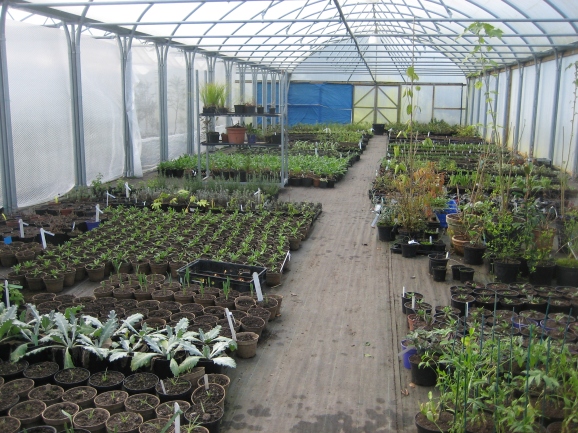Wednesday 20 February 2013
Time for seed sowing. This is no ordinary seed sowing as one would do at home, rooting out a tray from the mess in the greenhouse, bunging in some compost and sprinkling on the seeds and hoping for the best (that’s only me then?). No, this is precision sowing. We were using trays with 100 cells per tray, a mixture of 50% Horizon Cutting and Seed compost and 50% vermiculite (for good drainage) sieved together. Some of the seeds were sown one to a cell and others two to a cell. All the seeds were so small that the only way of getting one or two into a cell was to put them in the palm of the hand and ease each one along the crease in the palm with a very pointed piece of plastic letting it fall into the cell. Then a fine coating of the mixture was sieved over the top and finished off with a fine spray of water. Seeds sown – Pelargonium xhortorum, Antirrhinum majus (very tiny seeds testing the eyesight of the elderly, that’s just me again), Salvia coccinea, Zinnias, Tagetes minuta (6 ft., not a looker but it’s roots kill perennial weeds such as Ground Elder and Couch grass) and Laurentia hybrid ‘Avant Garde pink’. We didn’t even like to think about the pricking out later.
These plants will be used in the Gardens and sold in the Garden Shop.
Jill


